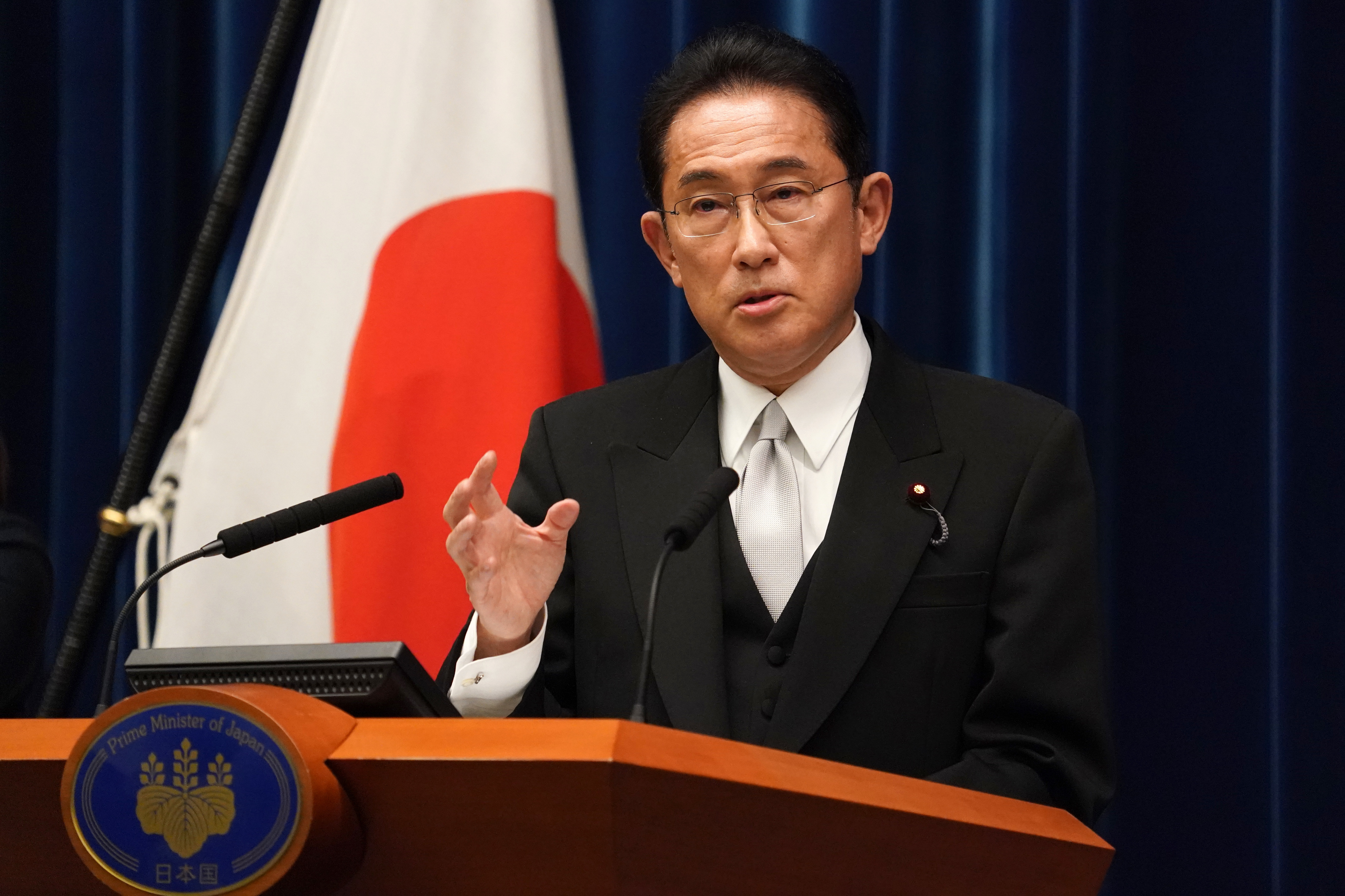The “three arrows” in the Abenomics program of economic expansion are helping lift Japan out of decades of paralyzing deflation. In recently announcing that he would go ahead with a scheduled consumption tax hike in April 2014, Prime Minister Abe also outlined a ¥5 trillion package of measures designed to mitigate the negative impact of higher taxes. While lauding the unpopular decision to raise the consumption tax from the viewpoint of fiscal consolidation, Senior Fellow Shigeki Morinobu believes the fiscal stimulus package represents a waste of fiscal resources that could jeopardize the Abe administration’s target of “halving the annual deficit by fiscal 2015. The following article is reprinted with permission from Chuo Online .
* * *
1. The decision to raise the consumption tax rate should be appreciated
On October 1, Prime Minister Abe officially made a cabinet decision to raise the consumption tax rate to 8% in April next year.
The Japanese economy is emerging from the prolonged deflation, partly due to the effects of the “Three Arrows” consisting of the “bold monetary policy” of the Bank of Japan, the “flexible fiscal policy” and the “growth strategy to stimulate private investment.” On the other hand, the fiscal situation remains to be the worst among the developed countries, with the primary balance in a deficit of 6.4% of GDP and an outstanding public debt of 190% of GDP in FY2012. If the confidence of the market in fiscal sustainability becomes shaken, it could have a huge impact on the economy and on people’s lives through the rise of interest rates and the like.
As for reform of the social security system, moreover, it has been pointed out that fiscal resources need to be directed toward enhancing policies in order to assist the child rearing of the working generations.
I would frankly give a high appraisal for officially deciding to raise the consumption tax rate with this timing from the viewpoint of fiscal consolidation and enhancement of social security.
2. Generous economic stimulus measures will leave problems
At the same time as the decision to increase the consumption tax, economic policy measures totaling ¥5 trillion were decided—comprising tax credit for capital investment, measures for low-income earners, additional spending on public investment, and the like—in order to mitigate the negative impact on the economy due to the rise of the consumption tax rate. The increased revenue from the consumption tax will be about ¥8 trillion. Although it is only for one year, the increased expenditure of ¥5 trillion has given an impression that the Abe administration is placing low priority on fiscal consolidation. Regarding its contents as well, a lot of problems exist for the use of fiscal resources as the measures include additional public investment of about ¥2 trillion under the guise of building national resilience and the Olympic Games. We should be careful about formulating a budget with the approach of “deciding the total amount at first,” which could incur moral hazard as we have seen in diversion of the budget for reconstruction from the earthquake disaster to other uses. We should not forget its origin that discussions on the rise of the consumption tax rate started as part of the Comprehensive Reform of the Social Security and Tax Systems.
Since such waste of fiscal resources could jeopardize the attainment of the Abe Administration’s fiscal target of “halving the primary balance deficit by FY2015”—which is also an international commitment—it will be strictly watched by the market going forward.
3. Reduced tax rates should not be introduced
The biggest issue of the consumption tax after its rise is whether to introduce a reduced tax rate for food. The agreement among the ruling parties states that, “we aim to introduce it at the time of raising the consumption tax rate to 10%,” scheduled to be decided by the end of this December.
The biggest issue for introducing a reduced tax rate is how to cover the accompanying revenue loss. If a reduced tax rate of 5% is introduced for food, it will result in the revenue loss equivalent to the revenue from about 1% consumption tax rate, as food accounts for around 20% of total expenditures. Those who advocate for introducing a reduced tax rate must show as well how they intend to secure fiscal resources of ¥2.5 trillion, equivalent to the revenue from the 1% consumption tax rate. Assertion of a reduced tax rate without alternative revenue is merely an empty, impractical theory.
Second, a reduced tax rate will benefit high-income earners more, and therefore, it will not contribute to measures for low-income earners or resolving regressivity. As high-income earners spend more on food, a reduced tax rate will not be a measure for low-income earners, but rather a preferential treatment for the rich after all.
Last, we should bear in mind that European countries with reduced tax rates are facing serious problems due to the emergence of business models which did not exist when they introduced VAT in 1960’. The issue is the distinction between eat-in service (for the standard tax rate) and take-out food (for reduced tax rates). They are distinguished by the temperature in the U.K., while by the number of items in Canada—we cannot say either is working. It will depend on future discussions as to how we will distinguish them in Japan, but it will certainly increase the burdens on consumers, businesses, and tax authorities in the end. Although changes in the reduced tax rates are advocated in EU, it will be politically difficult to reduce or abolish them once they are introduced.
Japan, which is witnessing such cases, should avoid introducing reduced tax rates at the 10% consumption tax rate, leaving aside cases where the tax rate exceeds 10%. Measures for low-income earners can be implemented efficiently with a simple tax refundable tax credit which has been introduced in Canada. For the Canadian type tax credit, please refer to the following essay (in Japanese):
http://www.tkfd.or.jp/research/project/news.php?id=963
4. The next step is reduction of the corporate tax
The issue for the whole tax system will be the reduction of the corporate tax. While abolishing the increased tax for reconstruction ahead of the schedule will be discussed at the same time, the special corporation tax for reconstruction is originating from the thinking that Japanese people as a whole should share the burden of necessary reconstruction from the earthquake disaster; and therefore, it is based on different logic, which will not directly lead to invigoration of the Japanese economy through reduction of corporate tax burdens. It should be fully discussed because we also have the issue of the balance with excess burdens on the income tax and the local inhabitant taxes.
Even after abolishing the special corporation tax for reconstruction ahead of schedule, the effective tax rate of the Japanese corporate tax will be several percentage points higher than it is in other countries. This is undoubtedly one of the reasons for the hollowing-out of the Japanese economy, including local areas, and we can expect a significant impact if the effective corporate tax rate is reduced. In that case, it would be important to create a route through which the benefits of corporate tax reduction could flow into households. We cannot say that corporate CEOs have been managing effectively. After reducing the corporate tax, they are expected to improve corporate governance and raise productivity, and then use the gain for increases in employees’ income and dividends.
With the limited resources for reducing tax rates, it is important to implement a fundamental corporate tax reform, including review of special taxation measures, review of the tax base of local taxes such as the fixed assets tax, and reinforced taxation on loss-making corporations and religious corporations.
The benefits of economic growth by Abenomics should be delivered widely to the nation (as increased tax revenue) and Japanese people (as increased income); the government and companies should not fail to work toward that end.






















